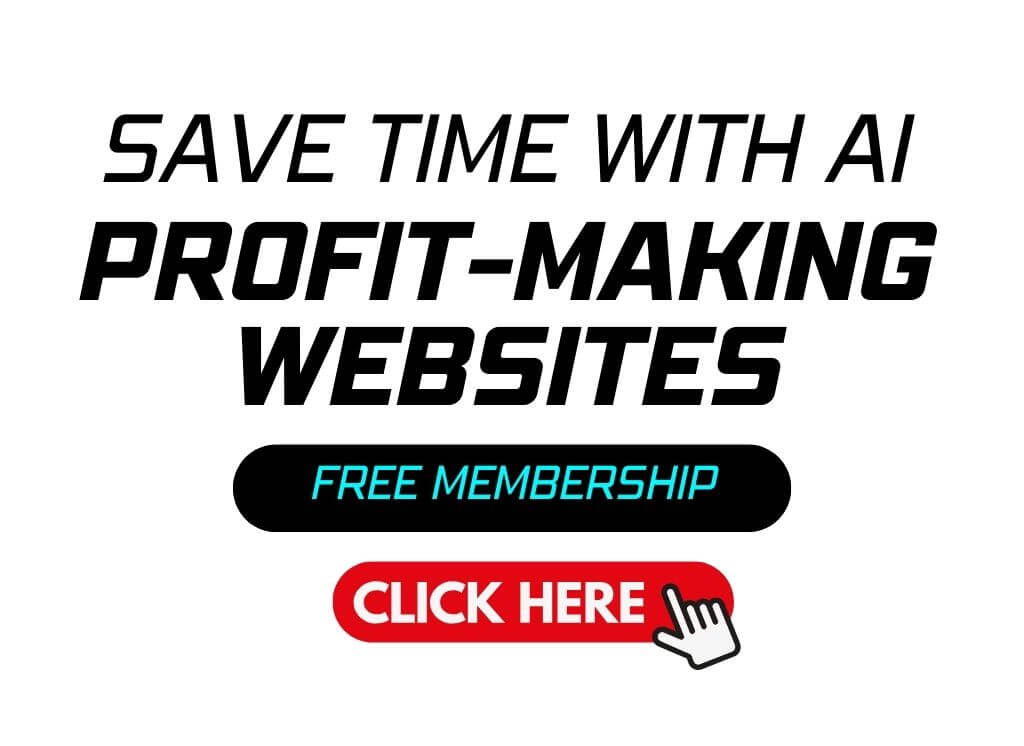YouTube Monetization isn’t just about earning money; it represents a shift from hobbyist to professional content creator. When you monetize your YouTube channel, you start to generate revenue from the videos you upload, allowing your passion for video creation to potentially become a sustainable career.
Revenue on YouTube doesn’t flow from a single source. Instead, it might come from ad revenues, channel memberships, the sale of merchandise, or a combination thereof. This variety creates a dynamic ecosystem where creators can explore multiple revenue avenues.
The significance of YouTube Monetization extends beyond personal gain. It’s a driving force in the digital economy, influencing the type of content that gets produced. Moreover, it shapes the online media landscape by affecting what viewers consume.
For viewers, understanding the monetization aspect can enhance their appreciation for the content they enjoy. It can also inspire aspiring creators, showing them the tangible rewards of building a successful channel.
Moving from understanding to action, the next natural step is to determine if you’re eligible for YouTube Monetization and what you need to do next. It’s essential to not just jump in but to wade through the requirements carefully, ensuring your channel is built on a solid foundation.
Eligibility and Requirements for Monetizing Your YouTube Channel
The first gate you need to unlock on your path to earning money on YouTube is gaining access to the YouTube Partner Program (YPP). This program provides creators with a suite of tools and opportunities to monetize their videos. What many don’t realize is that joining the program is not automatic; specific requirements need to be met.

Your channel must have at least 1,000 subscribers and 4,000 watch hours over the past 12 months or 10 million valid public Shorts views in the last 90 days to be considered. These metrics serve as a benchmark for YouTube, indicating that your channel has a sizable, engaged audience. They use these figures to gauge whether your content is creating value that holds viewers’ attention.
Another non-negotiable is adhering to YouTube’s community Guidelines, terms of service, and copyright laws. YouTube enforces these policies to ensure the platform remains a safe and respectful environment. It is critical you do not have active community guidelines strikes against your channel at the time of application.
Remember, the YPP is just the BEGINNING. Once you’re in, staying compliant with the guidelines is an ongoing process. Your content is always subject to review, and guidelines can evolve, which means your approach to content may need to adapt over time to maintain eligibility.
In the following section, I’ll delve into how you can maximize your earnings once you’re part of the YouTube Partner Program. From ads to memberships, there’s a range of strategies you can employ to not just monetize, but OPTIMIZE your YouTube channel’s earning potential.

Tips and Strategies for Youtube Monetization

If I want to make more from my Youtube channel, my best bet is to explore and deploy various income streams. Here’s how I approach it:
Ads are the bread and butter for many Youtubers. To maximize earnings, I create content that attracts a wide yet targeted audience. I keep my videos engaging from start to finish to encourage viewers to watch more, indirectly boosting my ad revenue.
I also consider affiliate marketing. By recommending products I believe in and providing affiliate links in the video descriptions, I receive a commission for sales made through those links. It’s a win-win: I earn extra cash, and my viewers discover products they may love.
Sponsorships can be a gold mine. I build a strong, loyal audience and then partner with brands that align with my channel’s niche. It’s critical that I am transparent about sponsorships with my audience, maintaining trust is crucial.
There’s also merchandise. Once I have a solid fan base, launching branded merchandise can lead to a significant revenue stream. T-shirts, hats, and other items featuring my channel’s branding keep fans connected and contribute to overall earnings.
Fan funding through memberships or platforms like Patreon offer viewers the chance to support me directly. I provide them with exclusive content or perks in return for their monthly contributions.
Lastly, I regularly analyze the performance data Youtube provides. Understanding which videos perform best helps me refine my content strategy to draw in more views, more engagement, and, ultimately, more revenue.
Moving into section four, it’s important for me to address the common challenges that come with monetization. No matter how well I strategize, there will be hurdles. I’ll explore those next and offer practical solutions.
Addressing Common Challenges in Youtube Monetization

Even the most successful Youtubers face challenges when it comes to earning money on the platform. One frequent issue creators deal with is demonetization, where videos no longer qualify for advertising revenue due to content that doesn’t align with advertiser guidelines. If you’re hit by demonetization, review the specific reasons provided by Youtube, and if possible, make changes to your content to make it advertiser-friendly.
Ad revenue can sometimes be as unpredictable as the stock market. You might notice that your earnings fluctuate from month to month. This is normal, and it’s usually due to changes in advertiser spending, which can be seasonal. To ease the stress of variable income, it’s smart to have a financial buffer and to expand into other revenue streams, like sponsorships or merchandise sales.
Finally, copyright and fair use are complex matters that can easily lead to pitfalls for Youtubers. A general tip: always use content you have created or have permission to use. If you need to use someone else’s content, familiarize yourself with fair use principles, and when in doubt, seek legal advice. Having a clear understanding of these matters not only protects your channel but also maintains its integrity and credibility, which your audience will appreciate.
31 YouTub Monetization Strategies for Content Creators

In the dynamic world of online content creation, YouTube continues to be a powerhouse for creators seeking to share their passion and expertise. However, the journey from uploading videos to turning a channel into a sustainable source of income involves a strategic approach to monetization. This comprehensive list explores 31 diverse monetization strategies, each with its own set of pros and cons. From traditional methods like Ad Revenue and Affiliate Marketing to innovative approaches like Subscription Boxes and Paid Fan Interactions, creators can tailor their revenue streams to align with their content and audience.
Whether you’re a seasoned creator or just starting, understanding these strategies empowers you to make informed decisions on how to monetize your content effectively. Remember, the key is finding a balance between revenue generation and maintaining the authenticity that resonates with your audience. Dive into this list, discover the strategies that resonate with your unique style, and unlock the full potential of your YouTube channel.
Ad Revenue (Google AdSense):
- Pros: Reliable income, easy to set up.
- Cons: Dependence on ad views, earnings can fluctuate.
Affiliate Marketing:
- Pros: Additional income from product sales, flexibility in product choice.
- Cons: May require a substantial audience for significant income.
Sponsorships:
- Pros: Higher earnings, potential long-term partnerships.
- Cons: May limit content freedom, requires a considerable following.
Channel Memberships:
- Pros: Recurring income, direct support from loyal fans.
- Cons: Need a substantial fan base, may not appeal to all audiences.
Super Chat and Super Stickers:
- Pros: Direct income during live streams, engagement with fans.
- Cons: Limited to live streams, need an active audience.
Merchandise Sales:
- Pros: Brand promotion, diversified income.
- Cons: Requires design and production efforts, audience may not be interested.
Crowdfunding (Patreon, Ko-fi):
- Pros: Direct support from fans, reliable income.
- Cons: Need an engaged audience, ongoing commitment.
Digital Products (Ebooks, Courses):
- Pros: Passive income, expertise showcasing.
- Cons: Initial effort in creation, market competition.
Selling Physical Products:
- Pros: Diversified income, brand promotion.
- Cons: Logistics and inventory management, initial investment.
Ad Integration in Content:
- Pros: Blends with content, potential for higher CPM.
- Cons: May disrupt viewer experience, risk of ad fatigue.
Membership Platforms (e.g., OnlyFans):
- Pros: Exclusive content, recurring income.
- Cons: May not align with all content types, potential controversy.
License Content:
- Pros: Additional revenue, wider audience reach.
- Cons: Limited control over usage, legal complexities.
Live Event Tickets:
- Pros: Additional income, direct fan interaction.
- Cons: Event organization challenges, limited to specific creators.
YouTube Premium Revenue Share:
- Pros: Additional revenue from premium subscribers.
- Cons: Dependent on YouTube Premium adoption, lower percentage share.
Adopting a Niche Focus:
- Pros: Targeted audience, higher CPM potential.
- Cons: Limited audience size, potential content constraints.
Collaborations with Other YouTubers:
- Pros: Shared audience exposure, collaborative creativity.
- Cons: Scheduling challenges, potential conflict.
Donations and Tip Jars:
- Pros: Direct support from viewers, flexible amounts.
- Cons: Relies on viewer generosity, not a guaranteed income source.
Interactive Cards and End Screens:
- Pros: Encourages user engagement, potential for more ad revenue.
- Cons: May not be effective for all content types.
Email Marketing:
- Pros: Direct communication with fans, additional revenue.
- Cons: Requires list building efforts, potential for spam concerns.
Product Reviews and Sponsored Content:
- Pros: Additional income, product samples.
- Cons: Authenticity concerns, audience trust maintenance.
Crowdsourcing Content Ideas:
- Pros: Audience engagement, relevant content creation.
- Cons: Dependency on audience suggestions, content quality concerns.
Subscription Box Partnerships:
- Pros: Additional income, potential for exclusive items.
- Cons: Logistics and coordination challenges, limited audience interest.
Teaching and Consultation Services:
- Pros: Utilizing expertise, diversified income.
- Cons: Time-consuming, may require additional skills.
Brand Ambassador Programs:
- Pros: Consistent income, long-term partnerships.
- Cons: Limited to specific brands, potential conflicts of interest.
Q&A Sessions and Paid Fan Interactions:
- Pros: Direct interaction with fans, additional income.
- Cons: Limited appeal, may not generate substantial income.
Podcasting and Sponsorship:
- Pros: Expanding content reach, additional income.
- Cons: Additional content creation effort, market competition.
Running Webinars:
- Pros: Additional income, showcasing expertise.
- Cons: Requires preparation, may need an existing audience.
Participating in YouTube Challenges:
- Pros: Increased visibility, potential sponsorship opportunities.
- Cons: May not be sustainable, content originality challenges.
Creating a Paid Community:
- Pros: Exclusive content, close fan interaction.
- Cons: Limited audience appeal, potential for community management challenges.
Educational Workshops and Courses:
- Pros: Utilizing expertise, diversified income.
- Cons: Time-consuming, may require additional skills.
Creators should carefully assess their audience, content type, and personal preferences before selecting monetization strategies to ensure alignment with their brand and values.
Maintaining a Sustainable and Ethical Monetization Strategy

Building a successful channel isn’t just about making money; it’s about creating a lasting connection with your viewers. To maintain a sustainable and ethical monetization strategy, you need to balance your content quality with your monetization tactics. This means putting your audience first, staying true to your brand, and consistently delivering videos that people find valuable.
Transparency is crucial in building trust with your viewers. If you’re promoting products or including sponsored content, be upfront about it. Your audience appreciates honesty and is more likely to stick around if they know you’re being straightforward with them.
Lastly, Youtube’s guidelines and monetization policies are not static. They evolve as the online landscape changes. To keep your channel monetized and in good standing, stay informed about policy updates and adjust your content strategy accordingly. This proactive approach will not only safeguard your revenue streams but will also demonstrate your commitment to responsible content creation.
AI Powered WordPress Websites


